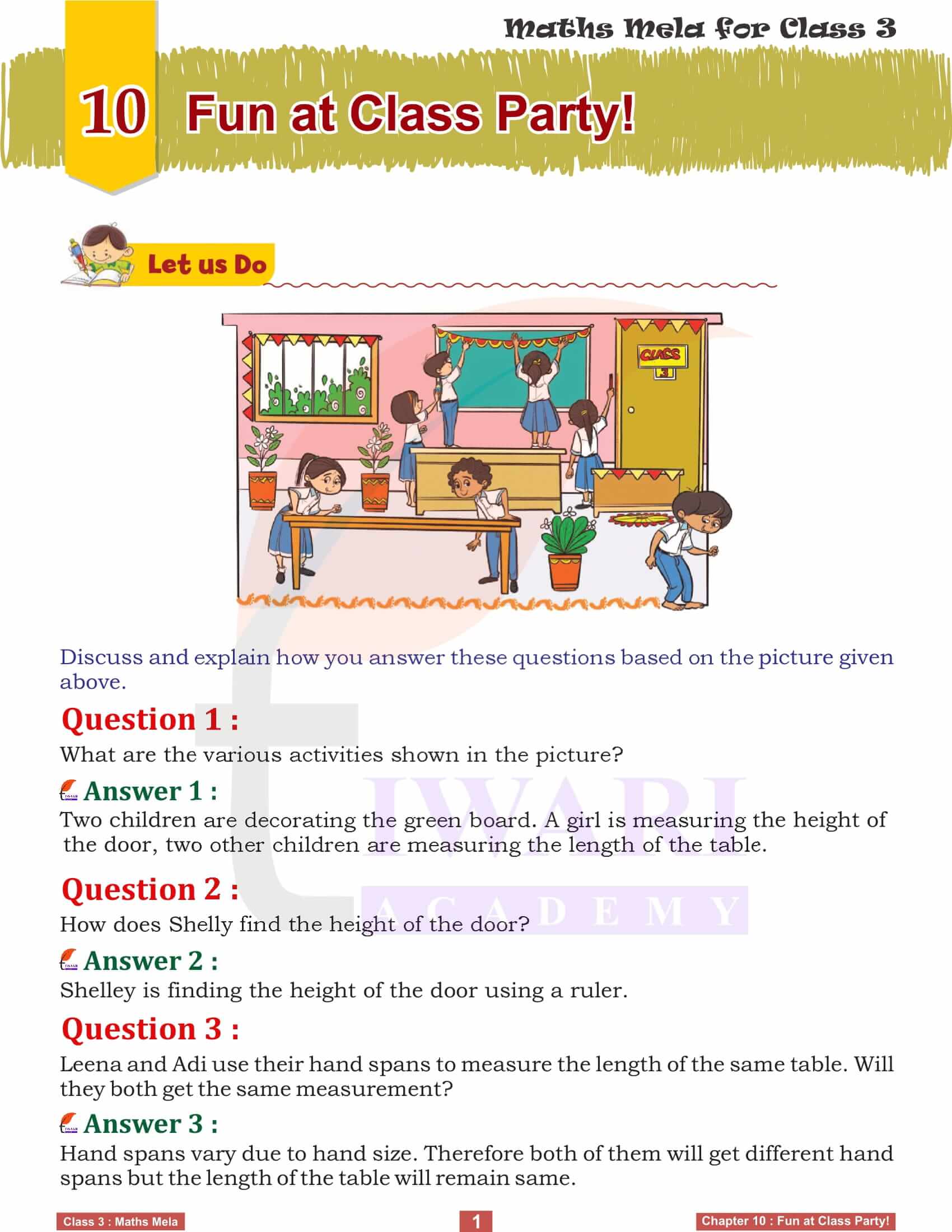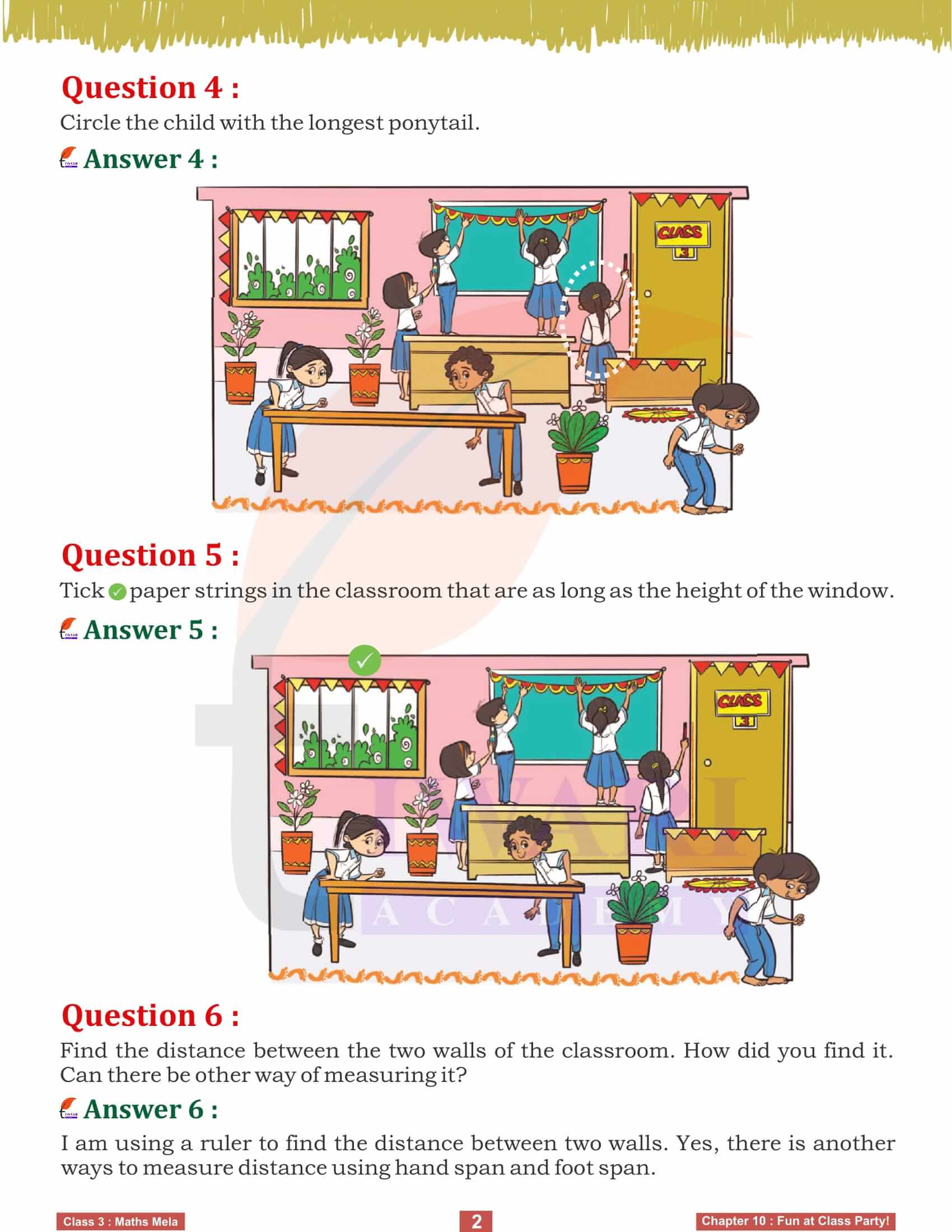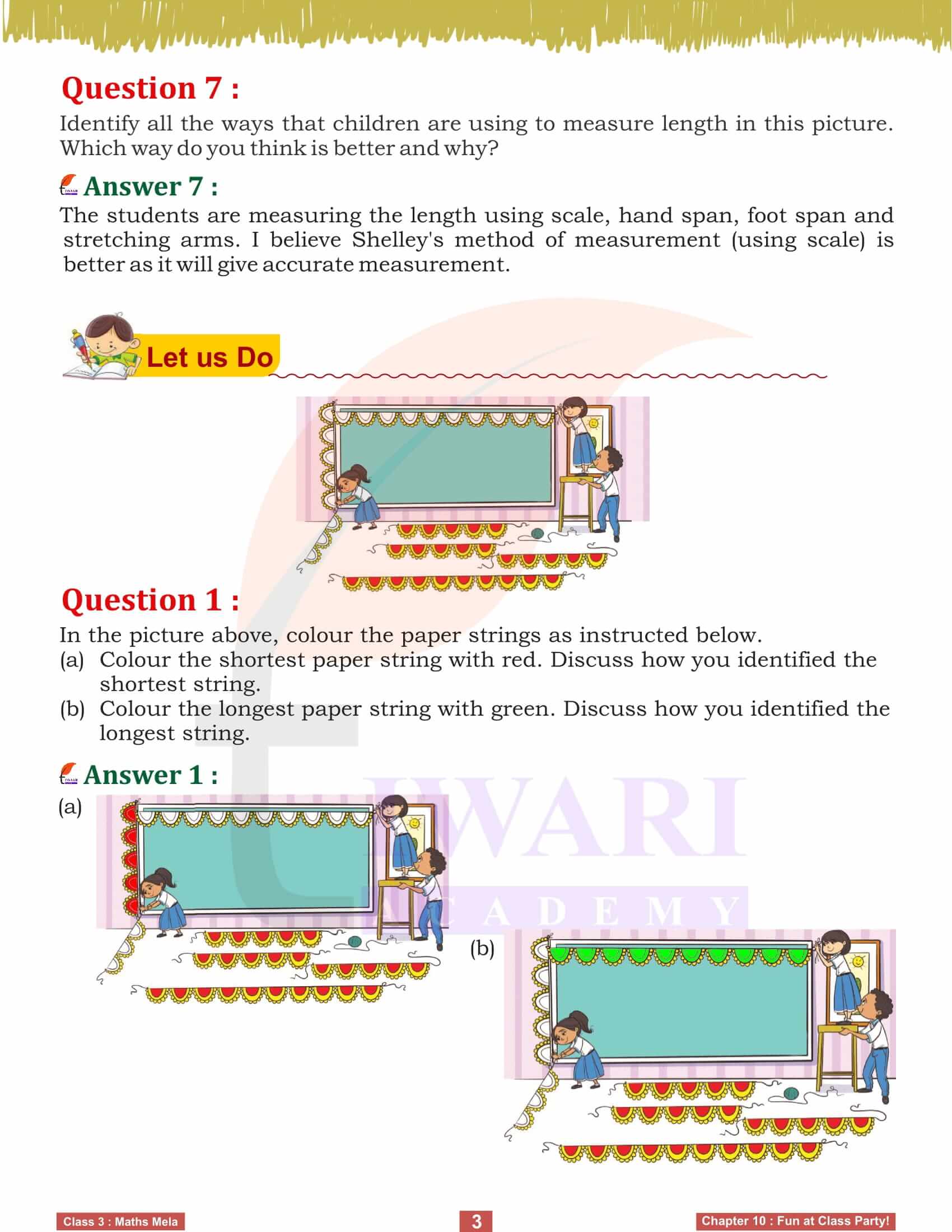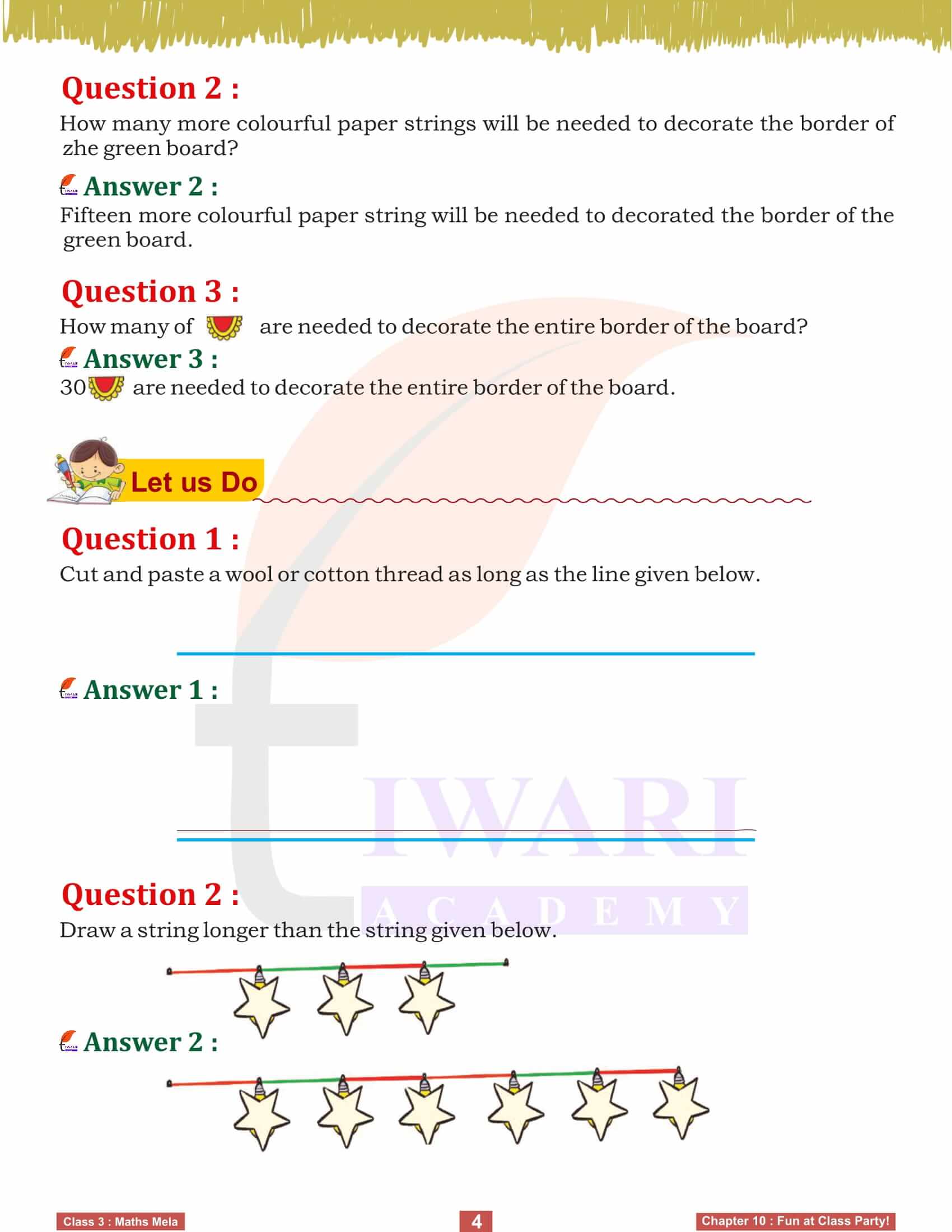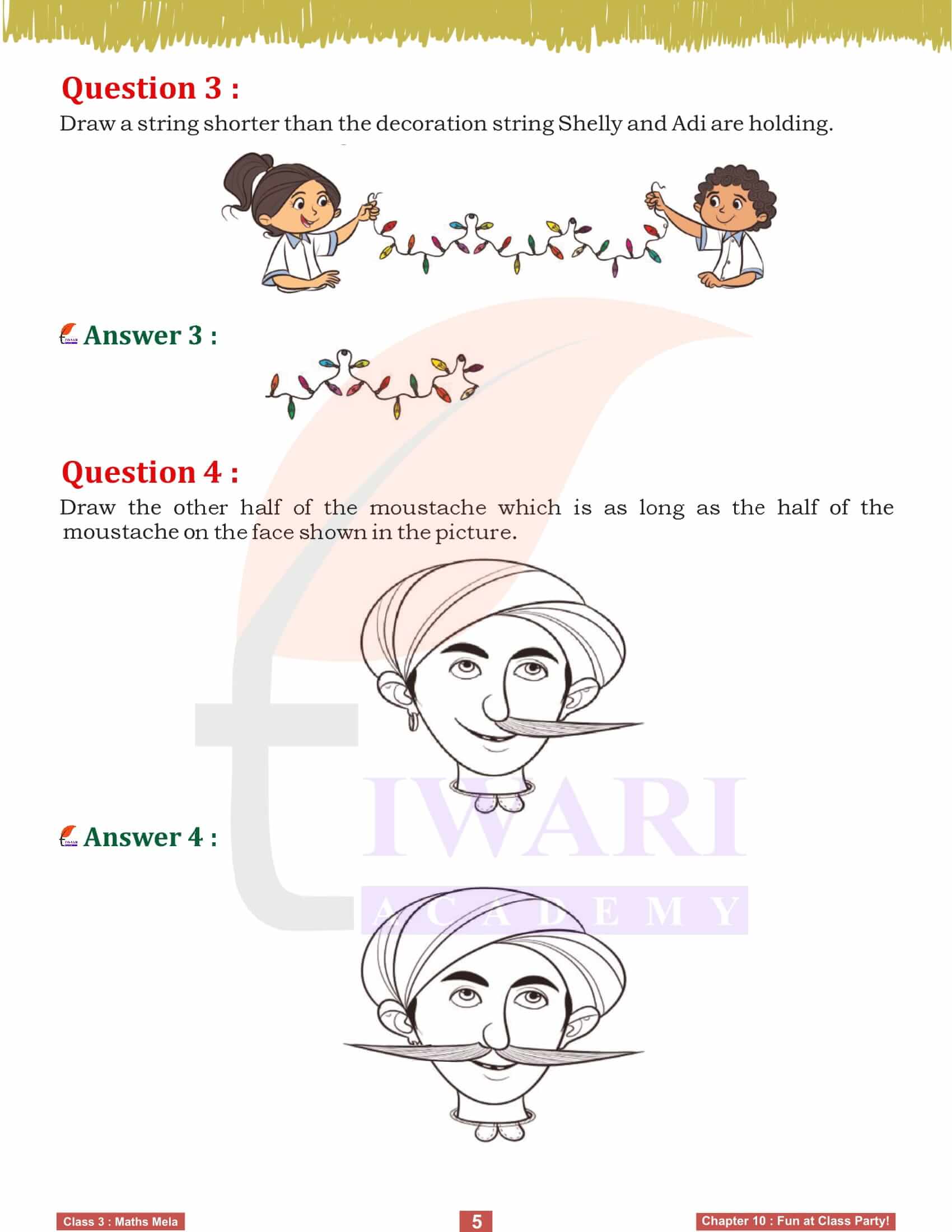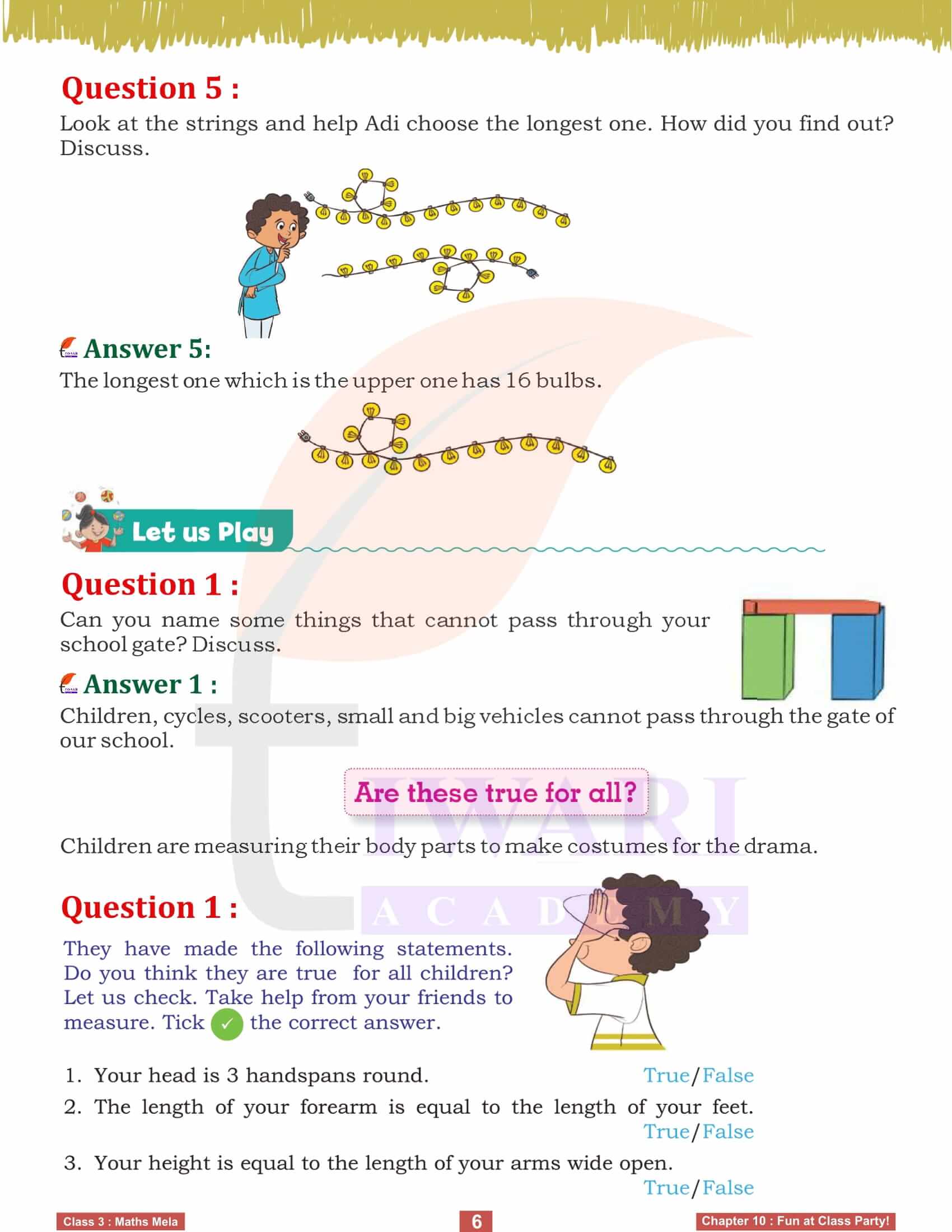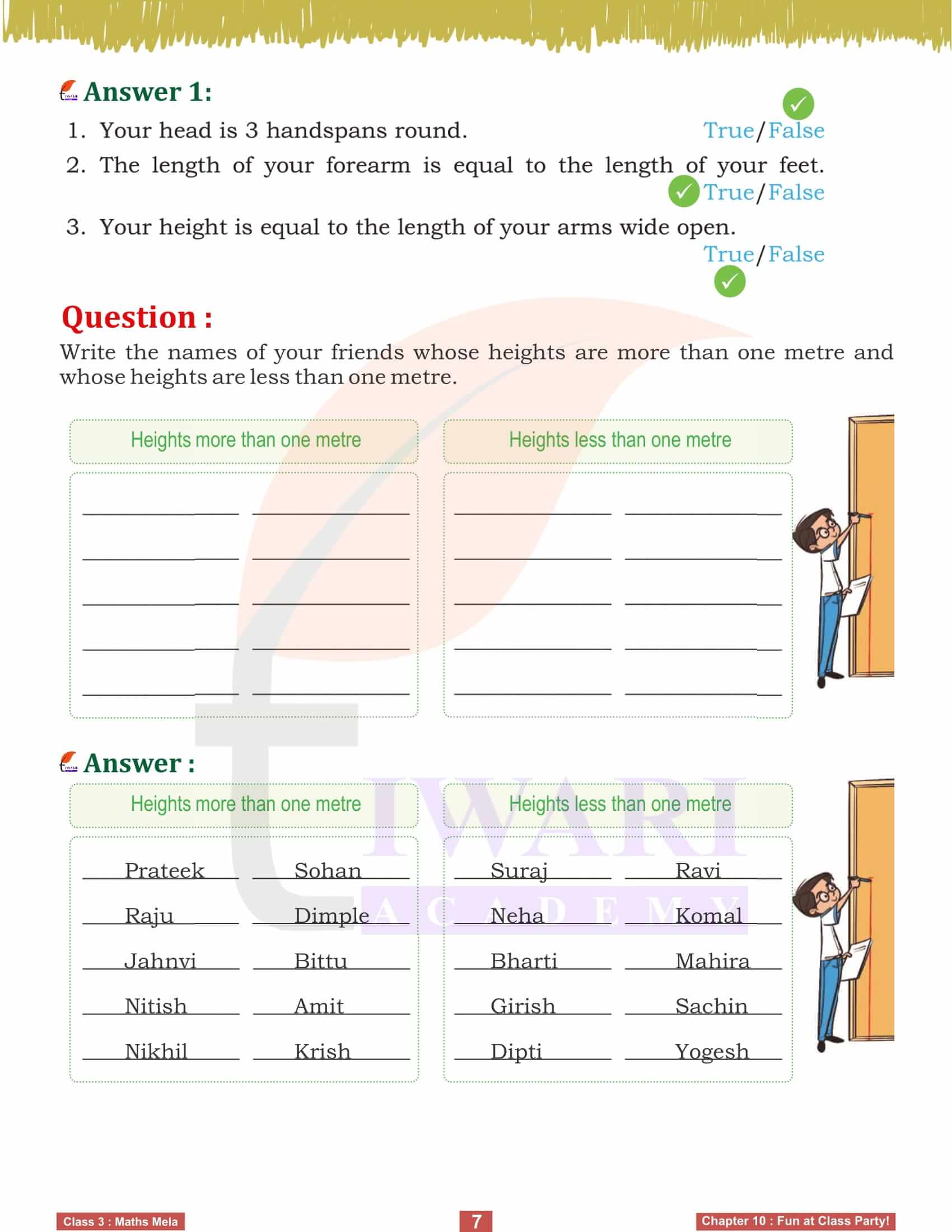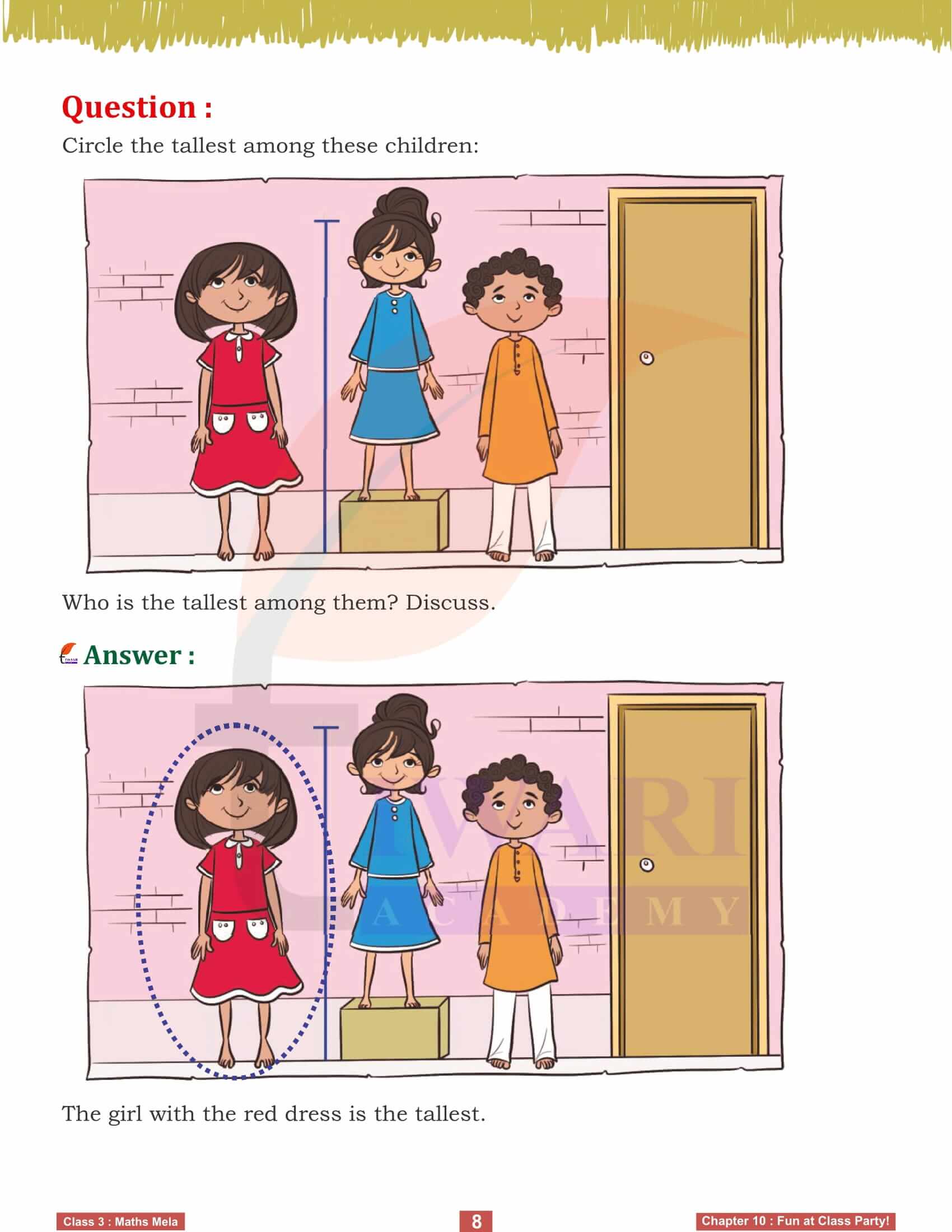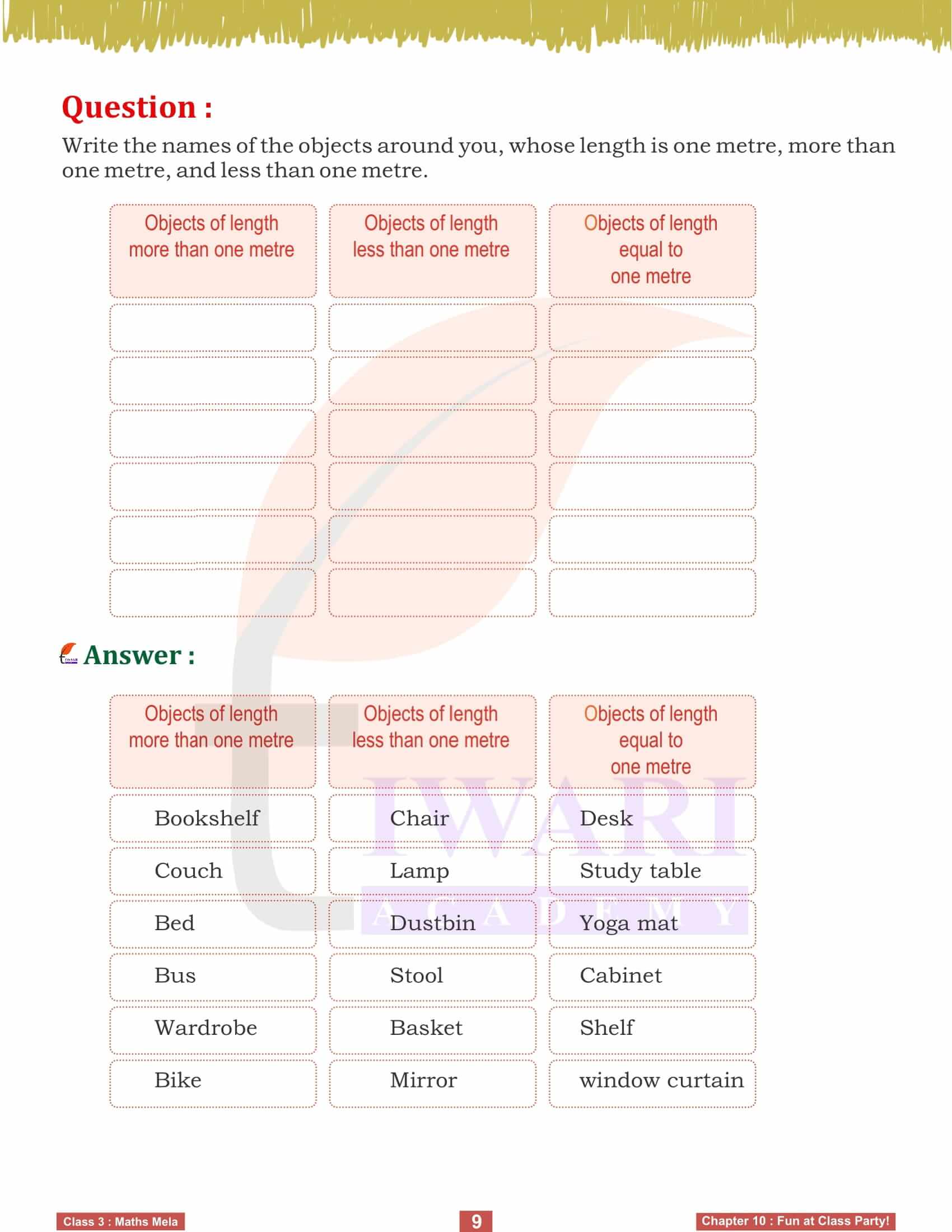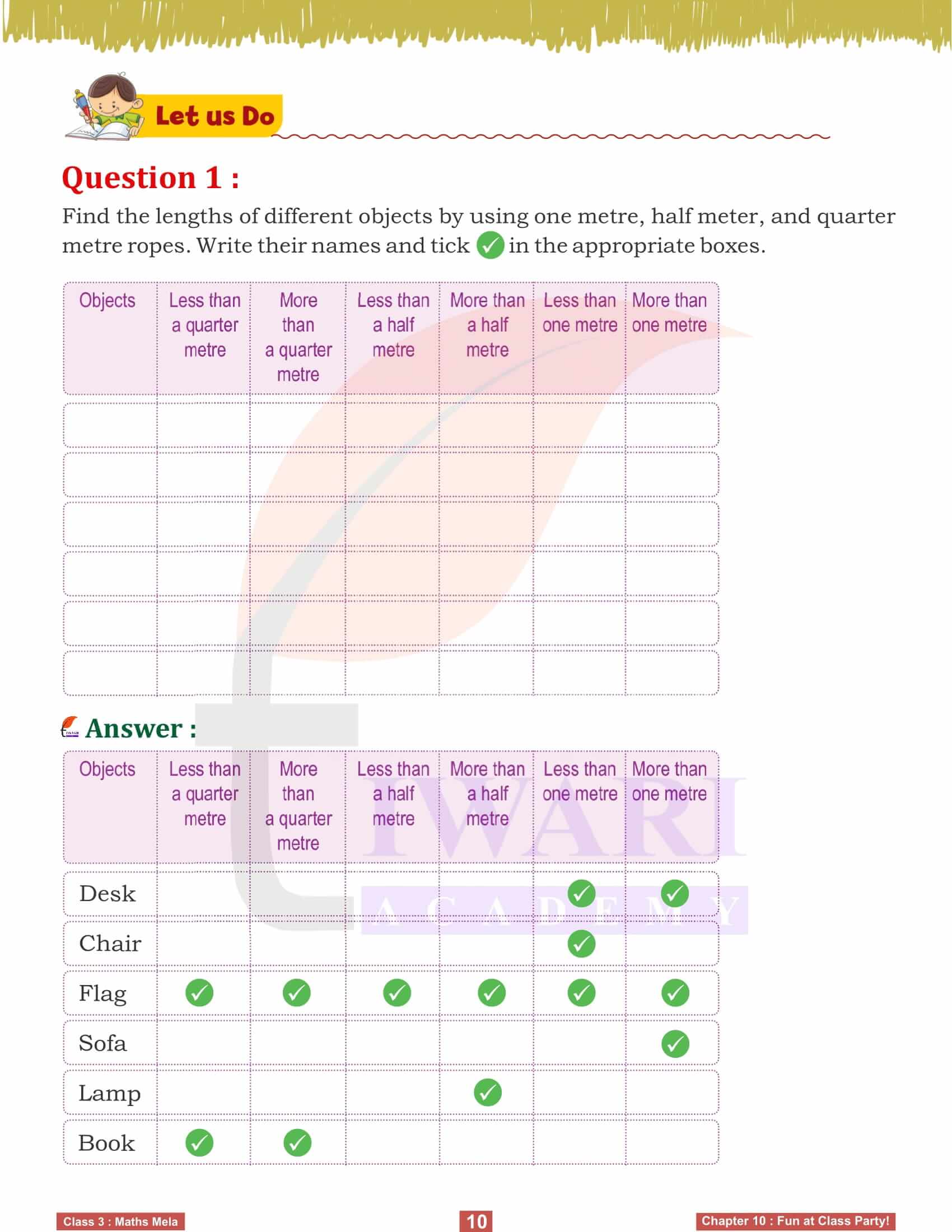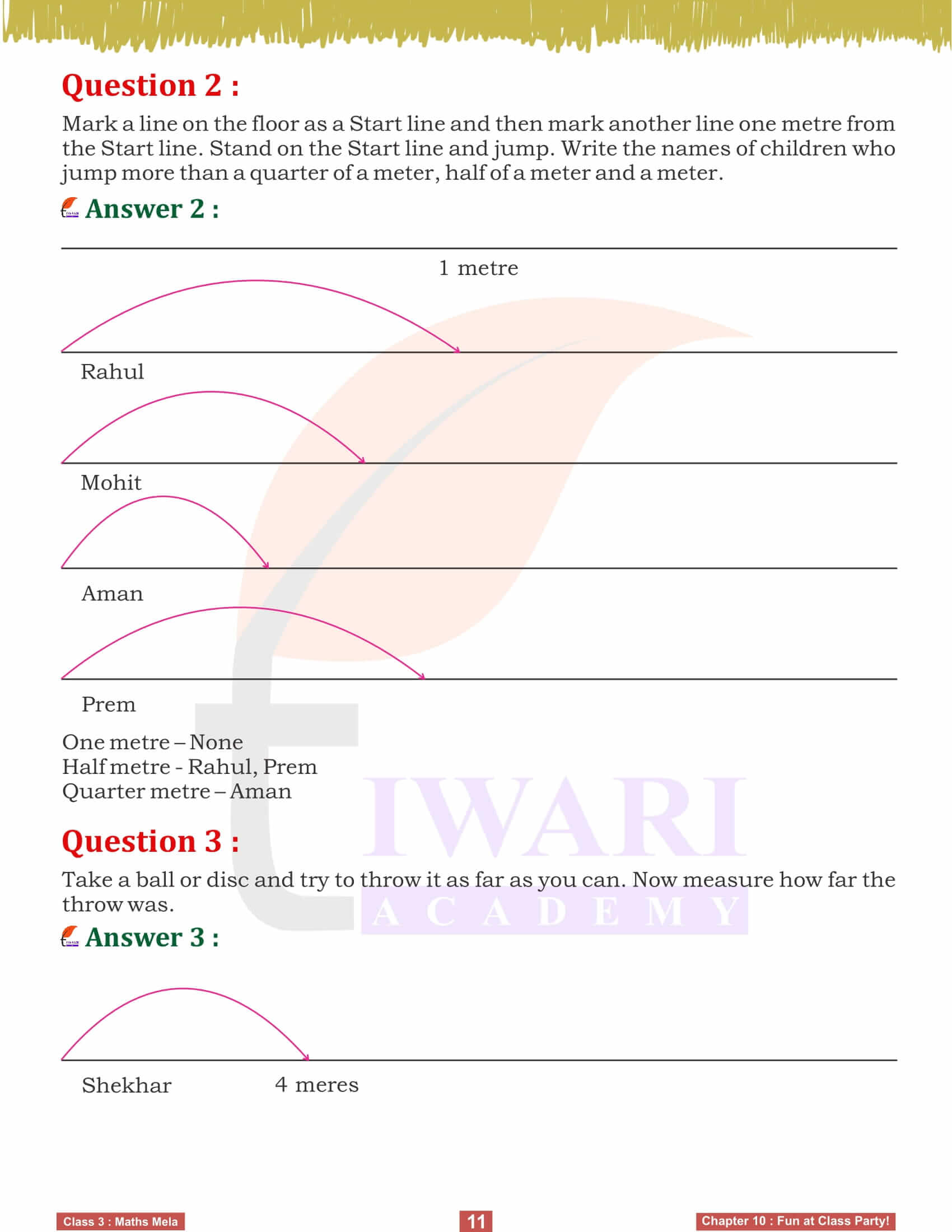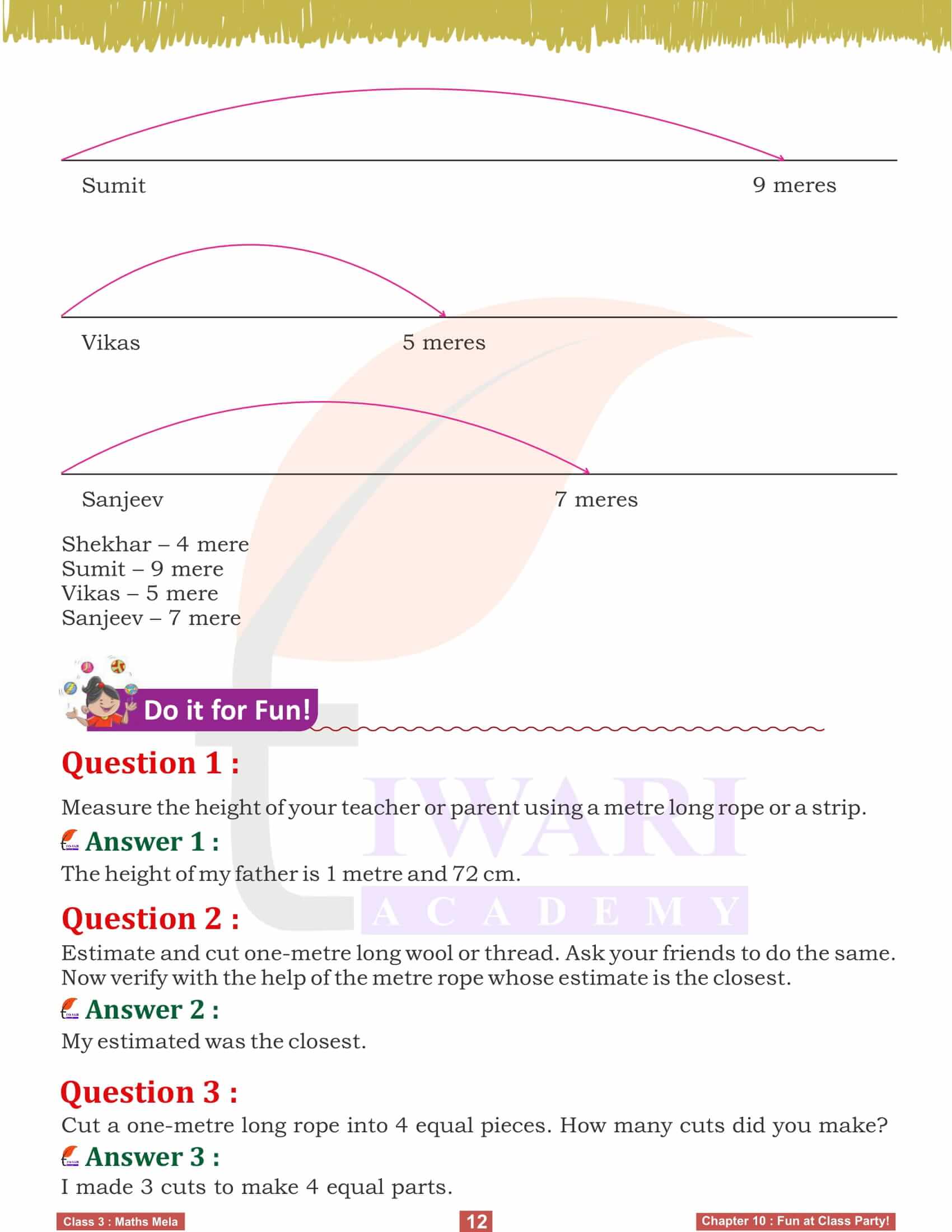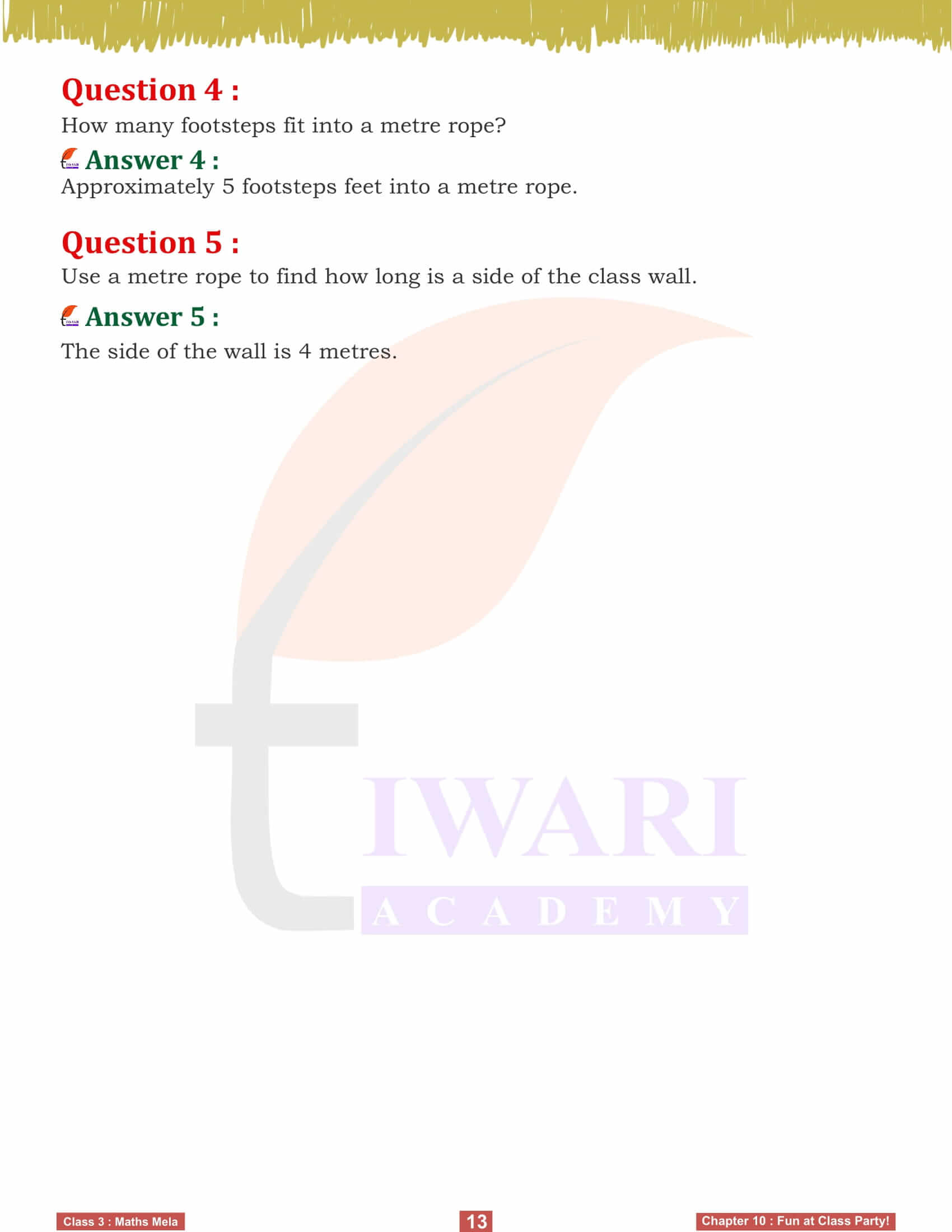NCERT Solutions for Class 3 Maths Mela Chapter 10 Fun at Class Party in Hindi and English Medium revised for session 2025-26. Class 3 Maths Mela Solution combines math with a party theme to teach data handling. Students learn to collect, organize and interpret data through activities like planning a class party, making lists and creating charts. These exercises help students understand how to manage and analyse data in a fun and engaging way.
Study Plan for Class 3 Mathematics
Class 3 Maths Mela Chapter 10 Fun at Class Party
Chapter 10 Fun at Class Party! – Introduction
Class 3 students, today we will explore an exciting chapter called “Fun at Class Party!” This chapter is all about understanding measurements in a fun and engaging way. We will learn how to measure various objects using different tools and techniques, and understand the importance of accurate measurements. Through various activities and examples, you will get hands-on experience in measuring lengths and distances, making it a memorable and enjoyable learning experience.
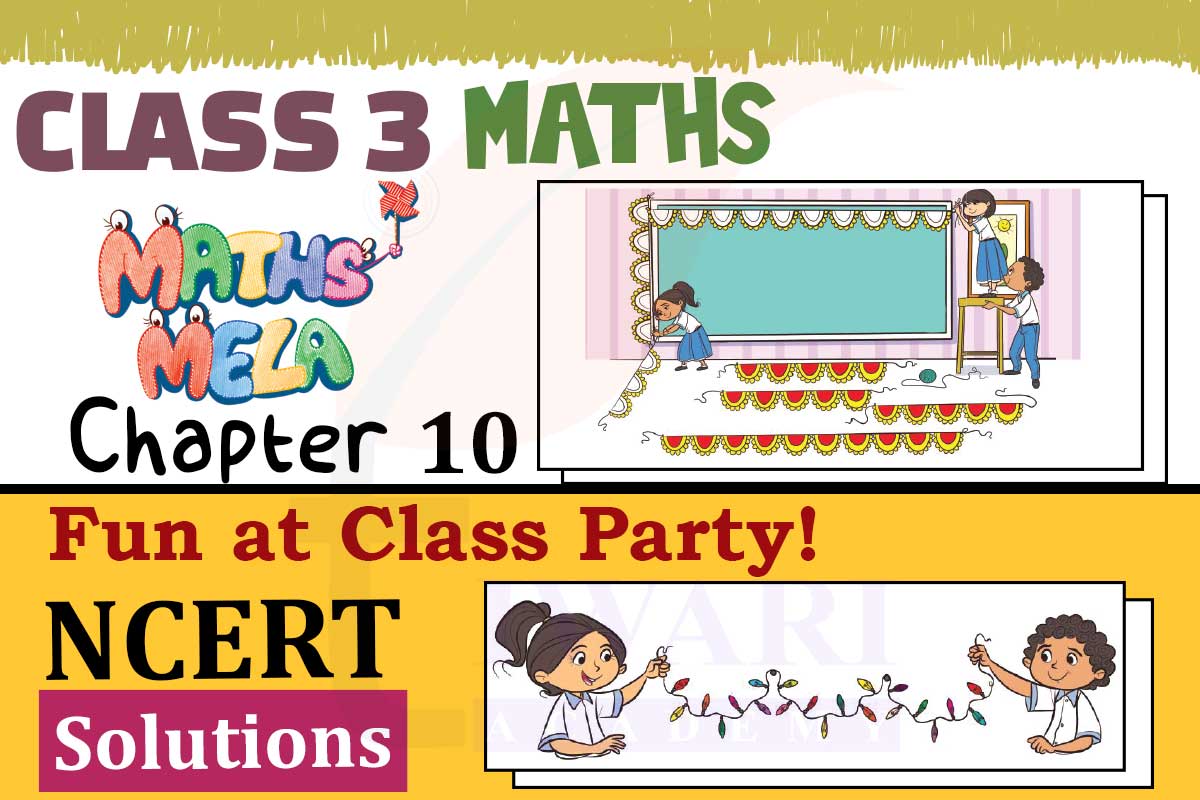
Activities in the Picture
Let’s start by looking at the picture in the chapter, which depicts a lively classroom party preparation. The children are engaged in various activities, such as decorating the room with colorful paper strings, measuring objects using hand spans, foot steps, and other informal tools. This visual scenario sets the stage for us to discuss and understand different ways of measuring length. We will learn how to use appropriate words like hand span, footstep, and paper strings to describe measurements, making it easier to communicate our findings.
Hands-On Measurement Exercises
The chapter 10 includes several practical exercises that involve measuring objects around us. For instance, you will cut and paste wool or cotton threads to match given lengths, draw strings longer or shorter than provided examples, and measure distances between walls or objects in the classroom. These activities are designed to help you understand how to measure accurately and compare different lengths. By engaging in these exercises, you will develop a strong foundation in measurement concepts, which are crucial for solving real-world problems.
Problem-Solving with Measurements
One interesting aspect of this chapter is problem-solving using measurements. For example, you will help Adi choose the longest string by comparing different lengths, figure out ways to take a large table inside a room when its dimensions are larger than the door, and discuss objects that cannot pass through the school gate. These scenarios encourage you to think critically and creatively about measurements and find practical solutions to everyday challenges.
Measurement Games and Fun Activities
To make learning even more enjoyable, the chapter includes fun games and activities. You will create bridges using classroom objects, measure your body parts to make costumes, and check if certain statements about measurements are true for all children. Additionally, you will learn to make a metre-long rope, measure your height, and compare it with your friends’. These games not only reinforce your understanding of measurements but also promote teamwork and collaboration among classmates.
Applying Measurements in Real Life
We will see in class 3 Maths chapter 10, how measurements apply to real-life situations. You will measure the heights of objects around you, estimate and cut lengths of wool or thread, and verify your estimates using a metre rope. By engaging in these practical activities, you will understand the significance of accurate measurements in daily life. Whether measuring ingredients for a recipe, planning space for furniture, or determining the length of a fabric, these skills will be invaluable.
Conclusion and Reflection
As we conclude the chapter 10, reflect on the various ways measurements impact our lives. From decorating a classroom for a party to solving practical problems, measurements are an integral part of our daily activities. This chapter not only teaches you how to measure accurately but also emphasizes the importance of using the right tools and techniques. By understanding and applying these concepts, you will be better equipped to handle tasks that require precise measurements, ensuring success in both academic and real-world endeavors.
Related Links
